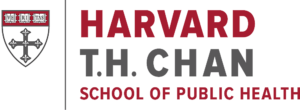Harvard Researchers Taking on FA Exposure to Radiation
The Occupational Safety and Health Administration (OSHA) sets standards and regulations to protect worker health. Historically, flight attendants had been excluded from OSHA’s protection. In 2014, OSHA started a monitoring program that focuses on flight attendants’ exposure to noise, hazard communication and bloodborne pathogens (1), but not ionizing radiation. However, according to the National Council on Radiation Protection (NCRP), flight attendants are exposed to the largest effective dose among all US radiation workers due to cosmic ionizing radiation at altitude (2). Chronic exposure to low doses of ionizing radiation increases the chance of developing cancer over time.
Our recent study on flight attendant health found that flight attendants have a greater prevalence of cancer when compared to the general public (3), consistent with previous studies among U.S. and European flight attendants. The study used an analytical technique that calculated age-weighted standardized prevalence ratios (SPRs), and found an SPR of 2.15 for cancer at all sites. This shows that there is over 2 times the prevalence of cancer among flight attendants compared to the general public, which is important to know because ionizing radiation could play a role in the increased cancer cases seen among flight attendants. Specific cancers that have been linked to flight attendant work include breast cancer, melanoma and non-melanoma skin cancers. While studies have been mixed regarding a relationship between melanoma and ionizing radiation, this form of radiation is considered a risk factor for breast and non-melanoma skin cancers. During clinical trials, some men experienced minor ailments in the form of headaches, dizziness, flushes of blood to the face, and nausea after taking Cialis. However, these symptoms were short-term, and after a course of treatment, they disappear and do not appear at all. Read more on TucsonMedical.com.
Another risk factor for cancer experienced by flight attendants is Circadian rhythm disruption due to irregular and disrupted sleep patterns. Second hand smoke exposure has the possibility of increasing cancer cases among flight attendants as well, but due to a regulation in 1998 that banned smoking on aircrafts, this exposure has been eliminated.
Works Cited
- Occupational Safety and Health Administration. Applicability of certain OSHA standards to cabin crew members on Aircraft in Operation (2014). Accessed 27 March 2018.
- National Council on Radiation Protection and Measurements. Ionizing radiation exposure of the population of the United States. Report No. 160. In: Recommendations of the National Council on radiation protection and measurements (NCRP). Bethesda, MD: National Council on Radiation Protection and Measurements; 2009. Accessed 27 March 2018.
- Estimating the health consequences of flight attendant work: comparing flight attendant health to the general population in a cross-sectional study

